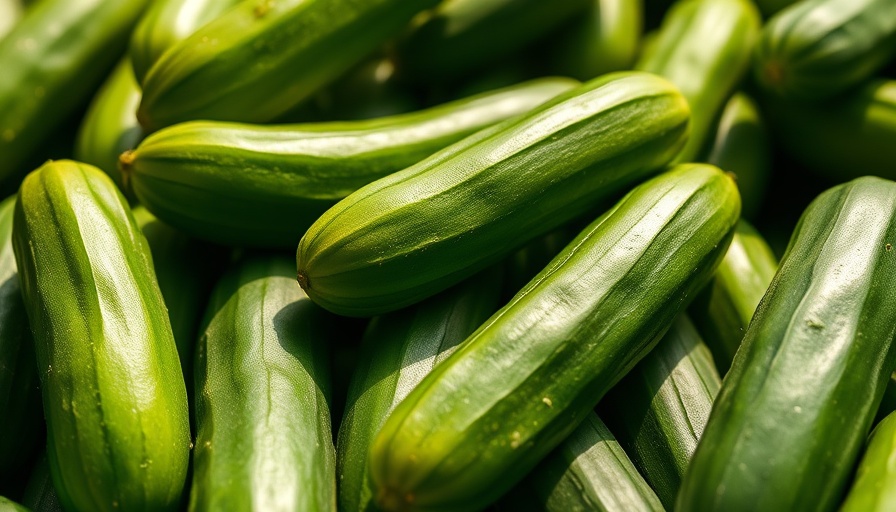
Understanding Cucumber Hollow Heart: What You Need to Know
For gardeners, the thrill of watching cucumbers grow can turn into disappointment when encountering a condition known as 'hollow heart'. Unbeknownst to many, this phenomenon isn't as simple as merely dealing with insect infestations or fungal infections. Instead, hollow heart reflects a subtle imbalance in the growth environment of the cucumber plant, leading to unsightly air pockets within a seemingly healthy fruit.
What Causes Hollow Heart in Cucumbers?
Understanding the underlying factors that contribute to hollow heart is crucial for effective prevention and remedy. Gardeners should be aware of several key causes:
1. Overwatering
As emphasized by horticulturists like Christopher J. Currey, too much water can spur rapid growth rates in cucumbers, leading to hollow heart. A sudden influx of moisture can shock the plant, disrupting the normal growth pattern and resulting in hollow spaces where solid seeds and flesh should be. It's essential for gardeners to monitor rainfall and soil moisture carefully, especially when it exceeds one inch per week.
2. Extreme Summer Heat
Heat can have a dual impact on cucumbers. While temperatures between 75 to 80°F promote growth, extreme heat can hinder the growth process, causing inconsistencies in fruit development. Pay attention to temperature changes and consider providing shade if temperatures spike significantly.
3. Nutritional Deficiencies
Boron deficiency has been identified as a contributing factor to hollow heart in cucumbers. This micronutrient plays a vital role in plant health, particularly in cell structure and reproduction. Regular soil testing can help to ensure that the appropriate nutrient levels are maintained, fostering healthy growth and minimizing the chances of hollow heart.
4. Excess Nitrogen
Over-fertilization, especially with nitrogen-rich fertilizers, can also lead to rapid growth spurts that predispose cucumbers to hollow heart. A balanced approach to fertilization, often coupled with organic gardening practices, is beneficial for maintaining optimal plant health.
Preventive Measures to Combat Hollow Heart
Freedom from hollow heart is not just about immediate fixes; it's about establishing long-term healthy practices in the garden. By diversifying nutrients and ensuring adequate but not excessive watering, gardeners can minimize the risk. Here are some proactive choices:
- Soil Testing: Regular tests can help balance nutritional needs and identify deficiencies before they become a problem.
- Mulching: Applying mulch can help maintain soil moisture effectively while regulating temperature.
- Companion Planting: Incorporating plants that improve soil health can support cucumber growth and resilience.
Can You Still Eat Hollow Cucumbers?
The good news is that hollow heart cucumbers are safe to eat. While their appearance may be less than appetizing, the core is not harmful to humans. Interestingly, this aspect might even provide a culinary surprise for those experimenting with cooking or enjoying fresh salads. Though they may lack the nutrients due to uneven growth, these cucumbers can still be utilized creatively in culinary dishes.
The Takeaway: Gardening Insights and Practices
Successfully cultivating cucumbers requires diligence in monitoring growth conditions. This not only involves managing water and nutrients but also understanding the plants in the context of their environment. Techniques such as raised garden beds, composting, and proper irrigation can contribute immensely to the overall health of your vegetable garden.
Ultimately, staying proactive about plant health and understanding the intricacies of plant growth empowers gardeners to embrace a successful and fruitful gardening journey. Every challenge faced, including hollow heart, teaches valuable lessons about nature and the care needed to enjoy a bountiful harvest.
 Add Row
Add Row  Add
Add 




Write A Comment